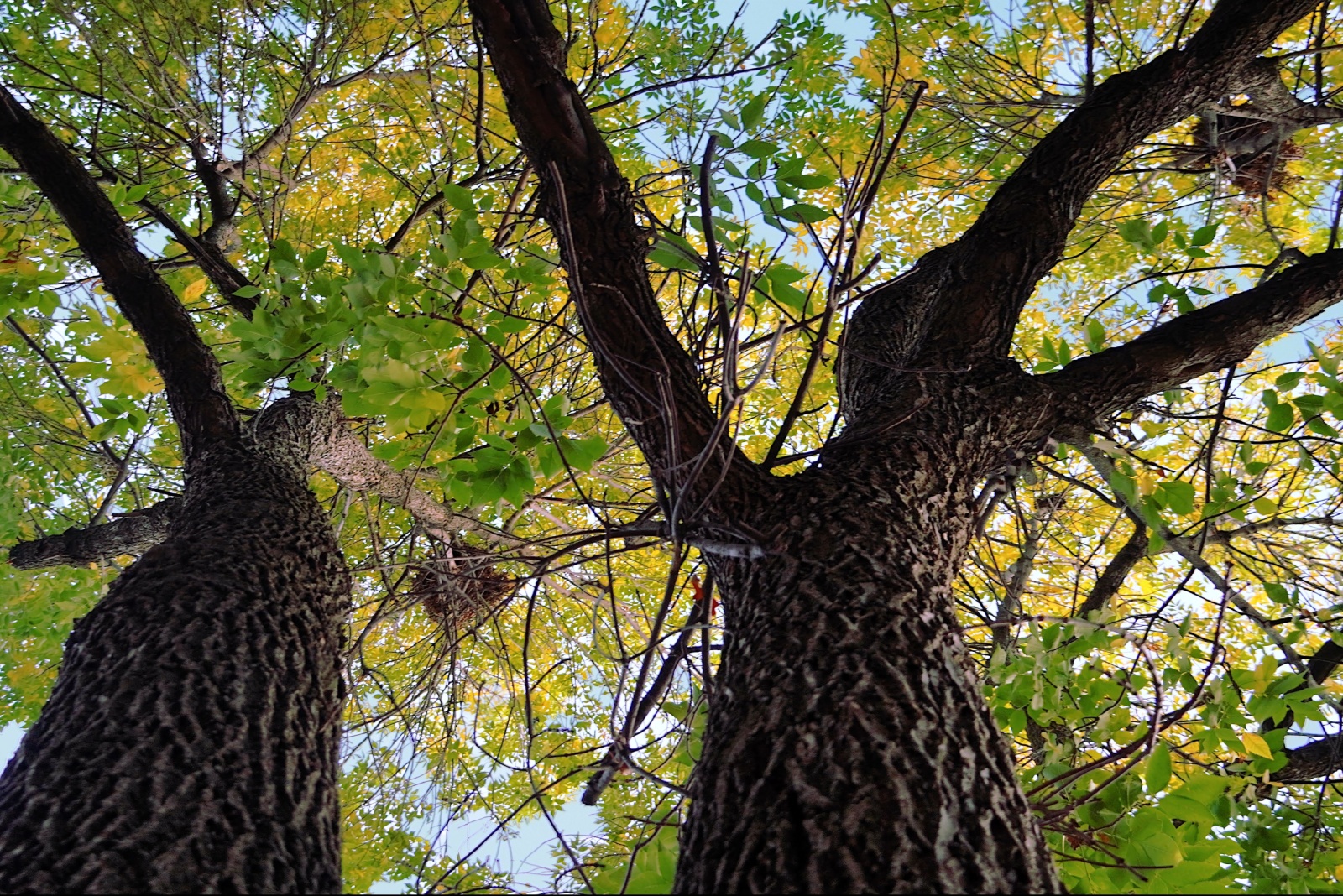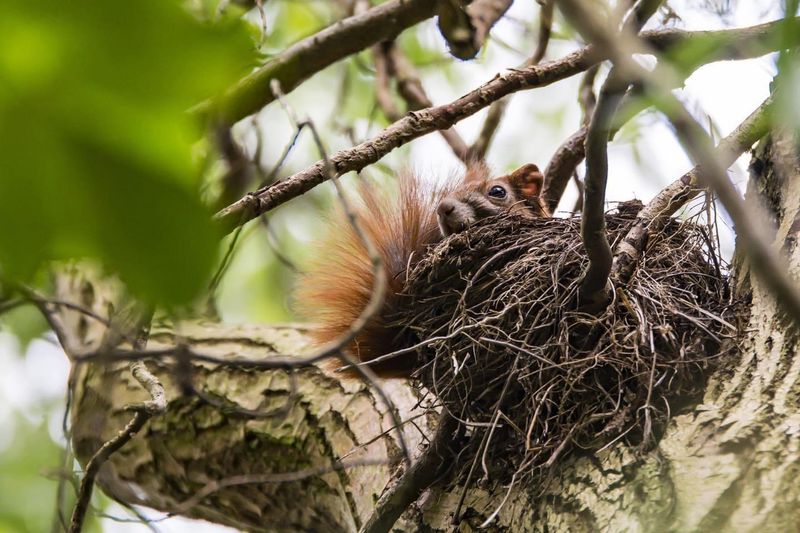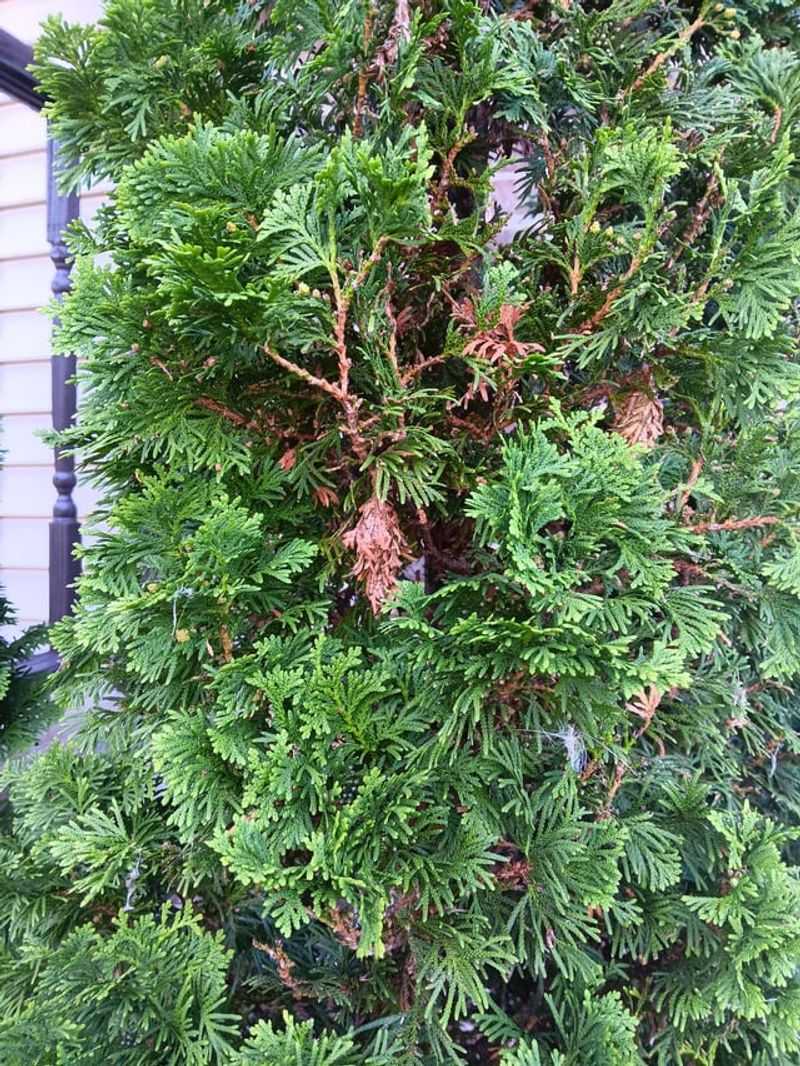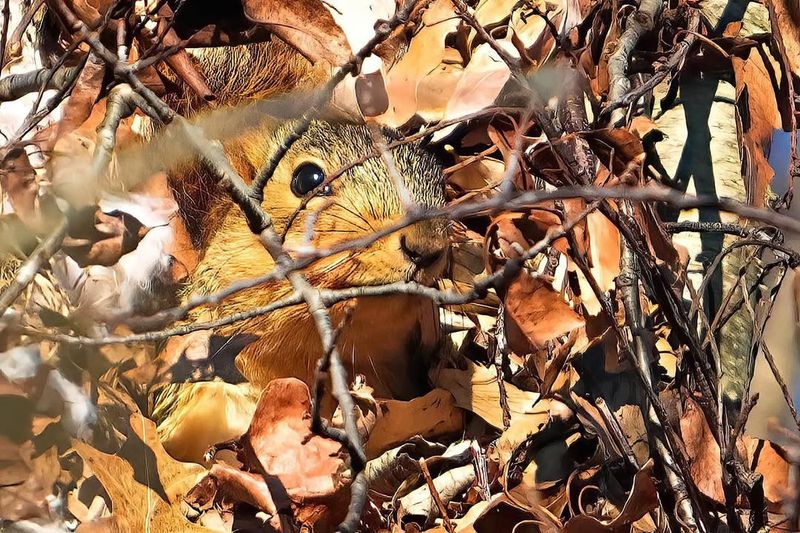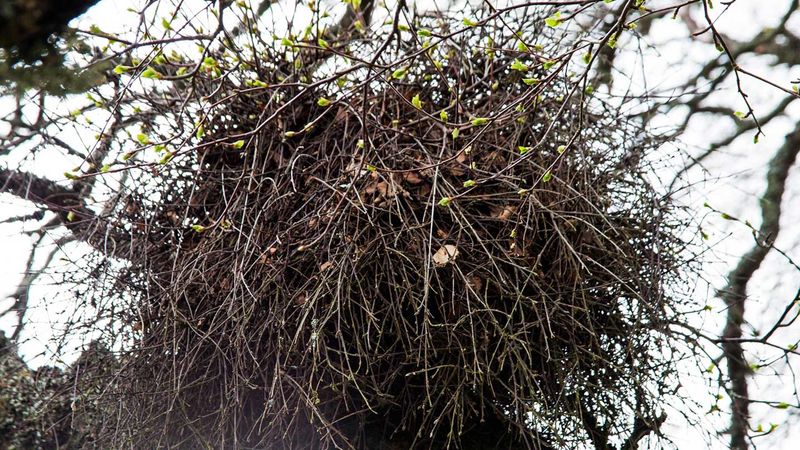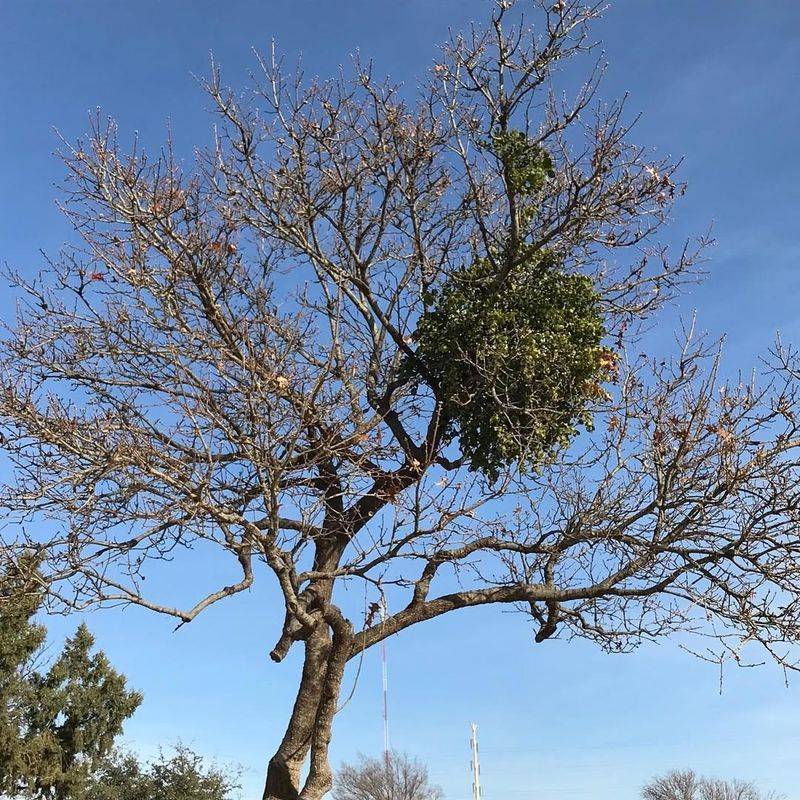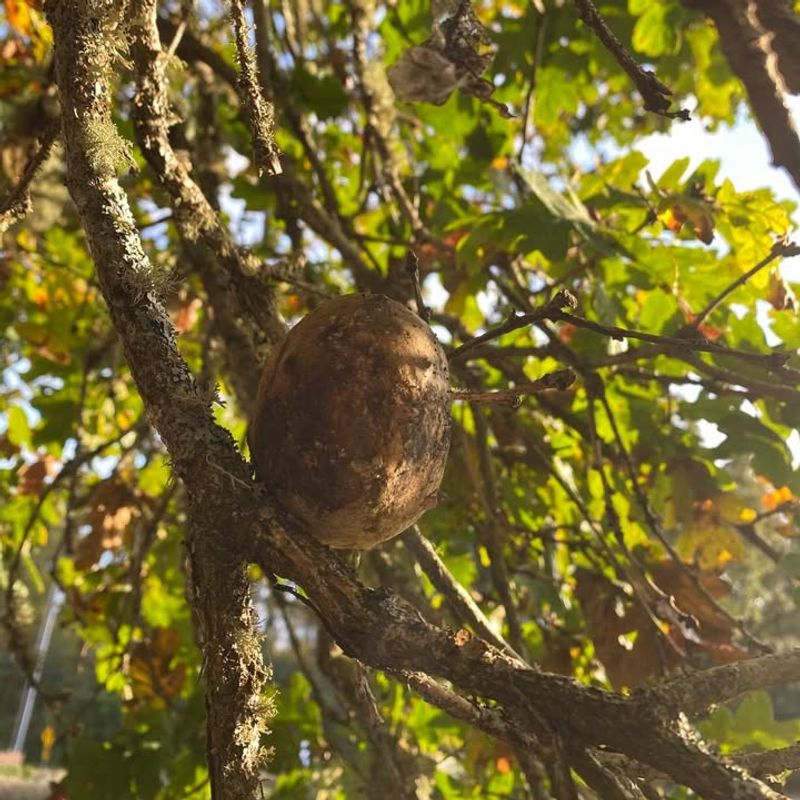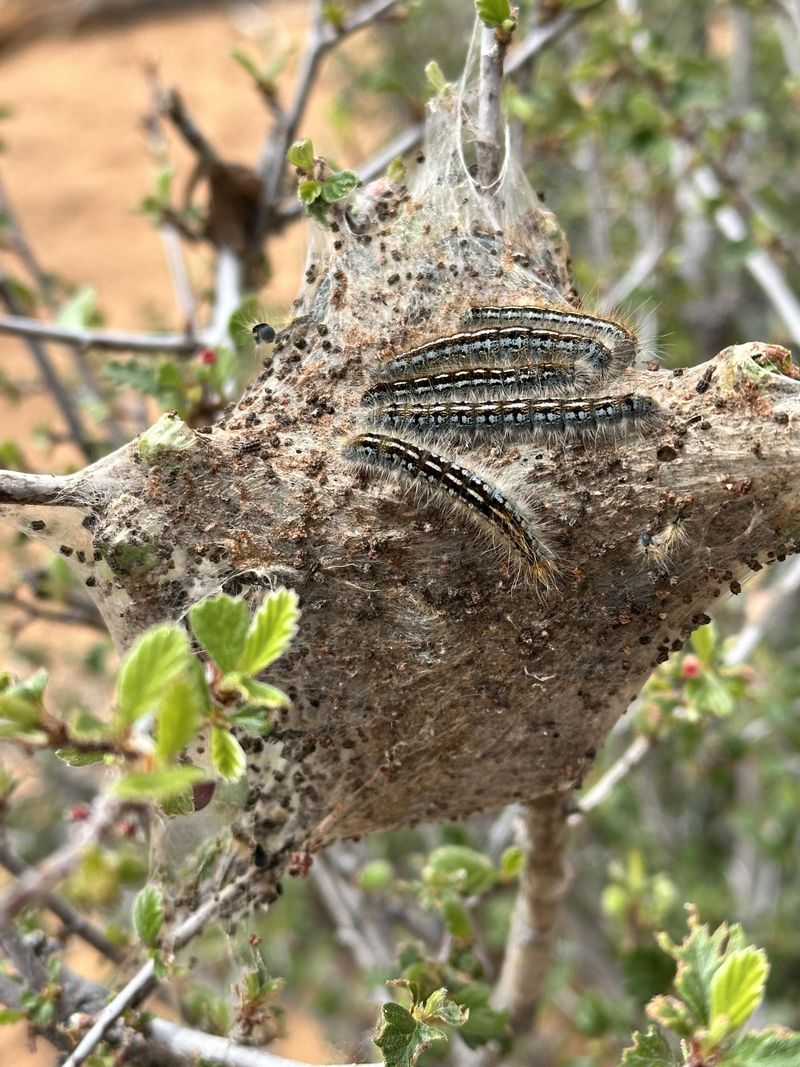You’re walking through your Indiana yard when something catches your eye—a big clump of leaves high in a tree. It doesn’t look quite natural, and you’re wondering what it could be. Before you grab a ladder or call for help, take a breath.
Not all leaf balls are bad news—some are cozy nests for squirrels or birds just settling in. But others might be a sign of trouble, like pest infestations or tree damage that needs attention. Knowing the difference can save you time, stress, and even a costly repair.
1. Squirrel Dreys: Cozy Winter Homes
Squirrels are master builders, and those leaf balls you see are actually their winter homes called dreys. They weave together twigs, leaves, and moss to create weatherproof shelters that keep them warm during Indiana’s cold months.
Unlike bird nests, dreys are much larger and look messier from the outside. You’ll typically spot them wedged between branches or tucked into tree forks, usually at least twenty feet off the ground.
These structures are completely harmless to your trees and actually show you have a healthy ecosystem in your yard.
2. Bagworm Infestations Need Quick Action
When those leaf clusters turn out to be bagworms, you’ve got a serious problem on your hands. These destructive caterpillars build protective cases from silk and bits of foliage, creating small cone-shaped bags that cling to branches.
Evergreens like junipers and arborvitae are their favorite targets across Indiana, but they’ll attack deciduous trees too. If left unchecked, bagworms can strip a tree completely bare.
Hand-pick the bags in late winter or spray with insecticide in early summer when the larvae are actively feeding.
3. Bird Nests From Last Season
Sometimes what looks like a random ball of leaves is actually an old bird nest from spring or summer. Once autumn arrives and trees lose their foliage, these hidden homes become suddenly visible to homeowners throughout Indiana.
Most songbirds build cup-shaped nests, but some species create larger, messier structures that resemble leaf clumps. Robins, blue jays, and cardinals are common nest builders in backyard trees.
These nests pose no threat to your trees, and birds rarely reuse old nests, so you can leave them alone without worry.
4. Witch’s Broom: A Curious Growth Abnormality
Here’s something strange—witch’s broom is a weird growth pattern where dozens of tiny branches sprout from one spot, creating a dense, tangled mass that looks like a giant nest.
Caused by fungi, mites, or viruses, this condition makes trees grow in bizarre ways. In Indiana forests and yards, you’ll see witch’s broom on hackberry trees more than any other species.
The good news? It rarely harms the overall health of the tree. Most experts recommend leaving witch’s broom alone unless it bothers you aesthetically.
5. Mistletoe Clusters: Holiday Plant Gone Wild
Yes, that holiday decoration actually grows wild in Indiana trees! Mistletoe is a parasitic plant that forms rounded, evergreen clumps high in tree branches. It sends roots into the tree’s tissues to steal water and nutrients.
You’ll recognize mistletoe because it stays green year-round while the host tree goes dormant. Oak, elm, and maple trees are common victims throughout the state.
While small amounts won’t hurt mature trees, heavy infestations can weaken branches and stunt growth, so prune affected limbs if the problem spreads.
6. Oak Apple Galls: Tiny Wasps At Work
Oak apple galls might look like strange fruit or tangled leaves, but they’re actually created by tiny wasps no bigger than a grain of rice. Female wasps lay their eggs inside oak tree tissue, and the tree responds by forming these round, papery structures around the developing larvae.
While they might seem alarming at first glance, these galls rarely harm healthy oak trees. The galls eventually dry out and turn brown, sometimes staying on branches through winter.
Inside each one, wasp larvae grow safely until they’re ready to emerge as adults. Most oak trees can handle these unusual guests without any problems, so you usually don’t need to remove them or treat your tree.
7. Leaf Nests Made By Caterpillars
Caterpillars are master architects when it comes to building protective homes from leaves and silk. Several species, including fall webworms and tent caterpillars, spin silk to bind leaves together into ball-shaped shelters where they feed and hide from predators.
You might notice these nests appearing in late summer or early fall, especially on fruit trees, willows, and other deciduous species common in Indiana. While these leafy bundles can look unsightly, most caterpillar nests cause only cosmetic damage to established trees.
Young or stressed trees might need protection, though. If you’re concerned, you can prune out the affected branches or gently remove the nests by hand while wearing gloves.

